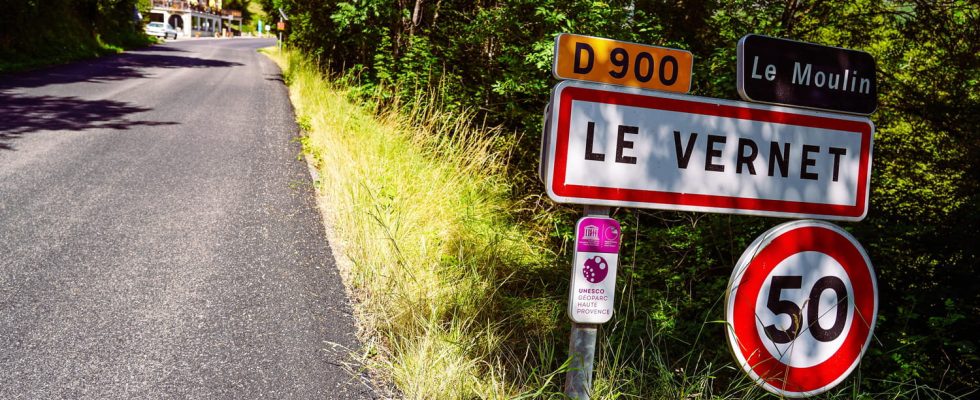Excavations continue this Monday to analyze the area where the bones of little Emile were discovered, near Haut-Vernet. A crime scene coordinator is expected.
The essential
- Nine months after his disappearance, the bones of little Emile were discovered on Saturday March 30, 2024, near the hamlet of Vernet (Alpes-de-Haute-Provence), the Aix-en-Provence prosecutor’s office announced this Sunday.
- It was a walker who discovered the skull to the south of the hamlet, “just like teeth” indicates Le Parisien. The identity of the little boy was quickly confirmed by the Criminal Research Institute of the National Gendarmerie (IRCGN).
- The track of the body’s movement becomes thicker. It is the one that is favored by Jacques-Charles Fombonne, former commander of the national training center for the judicial police of the gendarmerie as explained to France Info: “Given the means that were put in place, we really searched, that means say that the body has moved.
- This Monday, April 1, 2024, the hamlet of Haut-Vernet (Alpes-de-Haute-Provence) is cordoned off by the police. New excavations and investigations begin to try to determine the circumstances of the death of little Emile. In total, around a hundred gendarmes have been hired to resume the search and a crime scene coordinator is expected.
Live
10:16 – The body displacement hypothesis favored
The track of the body’s movement becomes thicker. And it is she who is favored by Jacques-Charles Fombonne, former commander of the national training center for the judicial police of the gendarmerie as explained to France Info: “This rather supports the hypothesis of a body which would have been moved and put precisely in this place, knowing that they say that we would not return there. Given the means that were used, we really searched, that means that the body moved” he assures. In addition, a simulation took place last Thursday, with 17 people out of the 25 in the hamlet. A version which seems to hold the rope for the spokesperson of the gendarmerie, guest of BFMTV yesterday. She considers a potential displacement of the bones “credible”. If the investigators were able to “potentially not detect this presence (…) we must not forget that we could also have deposited the bones afterwards” she continues.
10:08 – The body moved by wild animals?
Former investigating judge and public prosecutor, Jacques Dallest said this morning on BFMTV that “anything is possible in a case of this nature. It is possible to envisage that wild animals moved the child’s skull, that seen himself in other cases” he explains. On the other hand, he does not rule out the hypothesis of “a third person” either.
10:02 – A crime scene coordinator expected
This Monday, experts from the gendarmerie criminal institute are going to the site of the discovery of the bones to analyze the area. Mobile gendarmes from the department as well as investigators are also expected. Finally, a crime scene coordinator will be dispatched to proceed “methodically” indicated this morning, Marie-Laure Pezant, spokesperson for the National Gendarmerie.
Nine months after his disappearance, the bones of little Emile were discovered on Saturday March 30, 2024, near the hamlet of Vernet (Alpes-de-Haute-Provence), the Aix-en-Provence prosecutor’s office announced this Sunday. It was a walker who discovered the skull to the south of the hamlet, “just like teeth” indicates Le Parisien. The investigators will “deploy means to undertake additional research in the geographical area where (the bones) were found” specifies the Aix-en-Provence prosecutor’s office. François Balique, mayor of Vernet, has banned access to people from outside the hamlet until next Sunday, April 7, at noon. A municipal decree taken this Sunday.
This Monday, April 1, 2024, the hamlet of Haut-Vernet (Alpes-de-Haute-Provence) is cordoned off by the police. New excavations and investigations begin to try to determine the circumstances of the death of little Emile. In total, around a hundred gendarmes have been hired to resume the search, said the spokesperson for the National Gendarmerie, Marie-Laure Pezant, on Monday. Experts from the gendarmerie’s criminal institute go to the site of the discovery of the boy’s bones to “be able to analyze the discovery area”, she specifies. Mobile police officers are also present to secure the premises and prohibit access to the hamlet following the order taken by the mayor of the town this Sunday. The latter are deployed alongside the department’s gendarmes and research investigators and experts.
The scientific gendarmerie is continuing its analyzes and around thirty investigators are deployed in the area. In addition, a crime scene coordinator will also be dispatched, we read in the columns of Le Parisien this Monday, in order to organize different levels of research and “proceed by method” explains Marie-Laure Pezant at the microphone of France Info. “When you have a body that is placed on the ground, you have elements of the ground which allow you to know whether the body has been there for a certain time,” she continues, before indicating that the analyzes “can be long”. “We continue to exploit all the avenues” she concludes.
